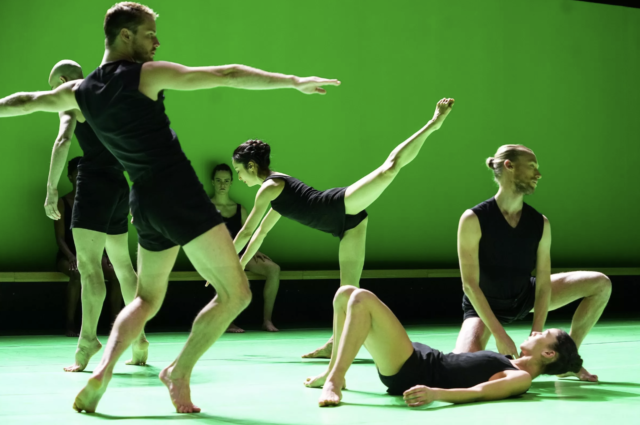
Batsheva Dance Company brings Hora back to New York in two-week Joyce engagement (photo by Steven Pisano)
HORA
The Joyce Theater
175 Eighth Ave. at 19th St.
February 28 – March 12, $10-$75
212-691-9740
www.joyce.org
www.batsheva.co.il
Next year is the one hundredth anniversary of the Jewish circle dance known as the Hora, created by Baruch Agadati in Palestine in 1924, influenced by Romanian and Greek traditions. The dance is a staple of Jewish American weddings and bar and bat mitzvahs, usually accompanied by the folk song “Hava Nagila” and including the lifting of various celebrants on chairs. The Tel Aviv–based Batsheva Dance Company is paying tribute to that centennial by bringing back former artistic director and current house choreographer Ohad Naharin’s sixty-minute Hora, continuing at the Joyce through March 12.
When the 2009 piece came to BAM in 2012, I called it “a mesmerizing experience, a stunning balance of light, color, sound, and movement from one of the world’s most innovative and entertaining choreographers.” It is just as mesmerizing today.
Batsheva and Naharin have dazzled us with such other pieces as Deca Dance, Three, Minus 16, Project 5, Venezuela, and Last Work; this return to Hora is a welcome one, even if the required mask-wearing muffles some of the audience’s exhilarated gasping.
Naharin’s Hora features no chairs and no “Hava Nagila”; it takes place in an empty rectangular space bordered on three sides by a green wall, with a long bench (designed by Amir Raveh) in the back where the eleven dancers sit when not dancing. Isao Tomita’s electronic score incorporates such familiar sounds as Richard Strauss’s “Also Sprach Zarathustra,” Richard Wagner’s “Tannhauser: Overture” and “Die Walküre: Ride of the Valkyries,” Charles Edward Ives’s “The Unanswered Question,” Claude Debussy’s “Prelude to the Afternoon of a Faun,” Modest Mussorgsky’s “Catacombs,” and a whistled version of John Williams’s main theme from Star Wars. (The sound design and editing is by Maxim Waratt.)
The show starts with the eleven dancers rising from the bench and approaching the front of the stage, set and lighting designer Avi Yona Bueno initially casting them in silhouette. It is one of only a few times the performers will move in unison; they break out into solos and other configurations, seldom coming into contact with one another as they proceed in Batsheva’s unique Gaga language, ranging from sharp, angular gestures to nearly impossible formations that resemble animals, insects, and even animated video game characters. I’m still trying to figure out how Ohad Mazor touched his foot to his elbow.
There are also dazzling moments from Eri Nakamura (who designed the black costumes), Billy Barry (undulating on the floor), Sean Howe (repeatedly hitting himself in the head), Londiwe Khoza, Matan Cohen, Chiaki Horita (gyrating her torso) — well, the entire company, which also includes Chen Agron, Yarden Bareket, Yael Ben Ezer, Guy Davidson, Ben Green, Li-En Hsu, Adrienne Lipson, Gianni Notarnicola, Danai Porat, Igor Ptashenchuk, and Yoni (Yonatan) Simon, who all display a thrilling physicality, testing the boundaries of what the human body could, and should, do.
When all eleven dancers are off the bench, it is hard to know where to focus your attention, as they are all doing different things; if you follow a cartwheel, you might miss a trio rolling over the floor or a duo balancing against each other’s buttocks. To watch the entire troupe at once is to get absorbed in a kind of whirlwind of life in all its unpredictability and excitement. But no matter where you look, prepare to be amazed.